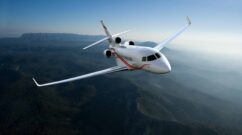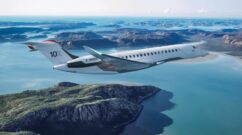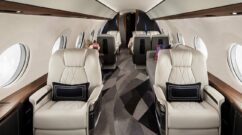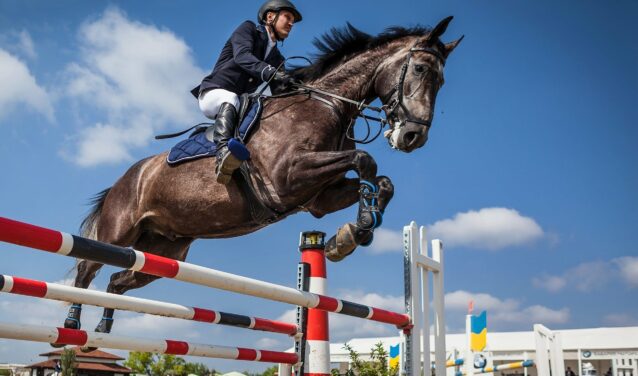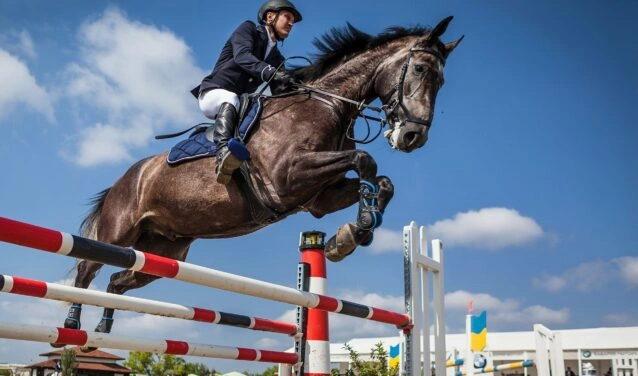
Whether you’re a professional rider, an amateur or simply curious, you need to know that sport horses are animals that travel a lot. There are many opportunities to transport horses by plane: prestigious horse races (Prix de Diane, Qatar, etc.), buying/selling sport and competition horses, international polo competitions or for the Olympic Games. As with our sportsmen and women, top-level horses have to travel all over the globe. But how do you move a horse from one continent to another? What are the formalities involved in flying horses? How much does it cost to transport a horse by cargo plane? And why choose air transport? Which airlines transport horses, and on which aircraft? AEROAFFAIRES explains everything you need to know about air freighting horses.
Why transport a horse by cargo plane?
Horses are generally transported by truck when distances allow.
But for longer distances (such as France – Japan), it’s better to use short, fast, time-saving means of transport. In this case, the airplane is perfectly suited.
Horses are fragile animals, sensitive to changes in their environment. It is preferable to avoid stress-related symptoms and to use airplanes for long-haul or medium-haul journeys.
Cargo aircraft are used to transport large loads and volumes. When transporting horses, the aircraft is specially equipped to carry the animals. On board a cargo plane chartered for horse transport, you’ll find stalls, hay, straw, water: everything you need to ensure your horse’s journey goes smoothly.
A cargo plane also provides greater security for the animal benefiting from the trip.
The reasons for transporting a horse by cargo plane can be :
- For a competition ;
- For sale;
- For a service;
- For a move.
Paperwork and rules for transporting horses by cargo plane
There are certain rules to be observed when transporting horses by air. The owner must provide the transport company with a series of documents:
- A French Equestrian Federation passport;
- An up-to-date health record for the horse;
- A list of vaccinations;
- For France Galop, sanitary procedures with veterinarians, analysis laboratories and the DDPP (Direction Départementale de la Protection des Populations) are required;
- Import/export documents for horses;
- ATA Carnet.
Depending on the airline, the owner will need to provide additional documentation.
Obtaining these documents costs around a hundred euros. This does not include veterinary and health checks, which must be paid for afterwards.

source : pixabay
How are horses transported by plane?
Which airports accept planes carrying horses?
There are only 5 airports in Europe that accept horse transport:
Some of these airports, such as Liège, have special terminals with facilities to welcome horses before their flight.
What happens when the horse boards the plane at the airport?
Before boarding, the horse is fitted with protective gear. This protects the horse and prevents any injury during transport: before, during and after the flight.
To get to the airport terminal, owners or stables use a conventional van or truck.
Once on the tarmac, the horses board the aircraft using a ramp or crane.
There are also companies that offer in-flight services, picking up your horse from your home, welcoming it in the terminal and taking care of all the administrative formalities.
What is the procedure for transporting horses once the plane is in the air?
Horses transported by cargo are often worth thousands, if not millions of euros.
Their transport must therefore be 100% safe and comfortable. Horses are fragile animals, and can quickly become ill or injured. There are several grooms and veterinarians on board the aircraft. They ensure that the horses travel smoothly. They take care of the horses from take-off to landing.
Optimum comfort is guaranteed for the animals, thanks to the work of a number of people. The challenge is also to control the animal’s stress, as it is sensitive to environmental changes and stress.
Which aircraft are used to transport horses?
Regular commercial airlines do not transport horses.
Only expert airlines venture to take horses on board.
There is one airline that specializes in transporting sport horses by air. This company uses a transport aircraft. It’s the Boeing 727.
The aircraft is fully equipped to transport horses in the best possible conditions.
How much does it cost to transport a horse by plane?
As for humans, there are three types of class for transporting horses:
- Economy class
- business class
- vIP class.
The difference between these 3 classes lies in the price. You should expect to pay around ten thousand euros to transport your horse by plane.
The second difference between these 3 classes, and the associated prices, is the space available for your animal. Logically enough, in economy class, the horse will have less space and will share its own space.
On the other hand, if the horse is transported in business class, it will have a larger stall.
Finally, if the horse is traveling in VIP class, it will travel alone, with its own dedicated space.
In all cases, the equines will benefit from dedicated grooms and veterinarians.
Need to charter a cargo plane to transport a horse?
For more information about transporting animals, or to request a charter of a business aircraft, contact AEROAFFAIRES on +33 1 44 09 91 82, by e-mail: charter@aeroaffaires.com or fill in our online quote. We’ll get back to you as soon as possible.

